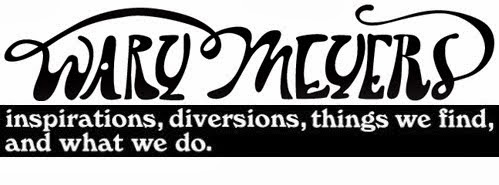


A beautiful book, Historic Design in Printing by Henry Lewis Johnson, $1 from a yard sale last weekend.
Printed in 1923, it essentially espouses the virtues of decoration and ornamentation in book design, through a slew of 16th century graphics, Johnson's smoothly explanatory text, and a well-curated selection of quotes from graphic designers, typographers, writers, and artists of the day. Here are some good ones:
"We know that the letters of the alphabet were once pictures, symbols, or abstract signs of entities and actions, and grew more and more abstract until they became arbitrary marks- the familiar characters that we know. Letters formed into words; words increased and multiplied with ideas and their interchange; ideas and words growing more and more abstract until the point is reached when the jaded intellect would fain again return to picture in writing, and welcomes the decorator and the illustrator to relieve the desert wastes of words marshalled in interminable columns on the printed page."
"Ornamental art, pure and simple, is like the measure and rhythm of a verse. A verse may scan, may have a proper accent and cadence. In short, may have all the music of harmonious versification, and yet be made up of words which are mere nonsense; and so in ornament, it is not necessary to its beauty, as ornament, that it should have any meaning. It is quite sufficient that it should be beautiful."
-F.W. Moody
"Originality is a quality which is very much misunderstood. It is in truth easy enough to be original if one does not mind being ridiculous. If any man was master of Renaissance ornament it was surely Alfred Stevens; yet the number of fresh ornamental motives which he was able to produce during his lifetime can probably be counted on the fingers of one hand."
-G. Woolliscroft Rhead (author of Chats on Costume)
"To follow precedent wisely does not mean to imitate slavishly one great exemplar, but to study all masters faithfully, letting their great achievements sink slowly into the mind in order that we may patiently derive from the richness of our acquired knowledge and organized system an attitude of our own."
- Lindsay Swift
and
"The successful designer should have a thorough knowledge of the historic styles, not for the purpose of reproducing their forms, but in order to discover for himself he methods by which the old artists arrived at the successful treatment of nature and of former styles, so that by the application of his knowledge, derived from the study of nature and he works of former artists, he may be enabled to give to the world some original and interesting work."
-James Ward
There are plenty more, all equally thought-provoking and inspiring. The ornaments and type designs are fantastic and so well laid out and printed, but ironically it's the writing that was the page turner.



1 comment:
Oh my... what a gorgeous book!!! Honestly. A dollar?!
Post a Comment